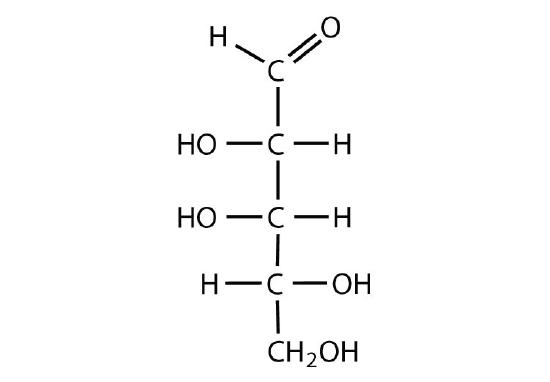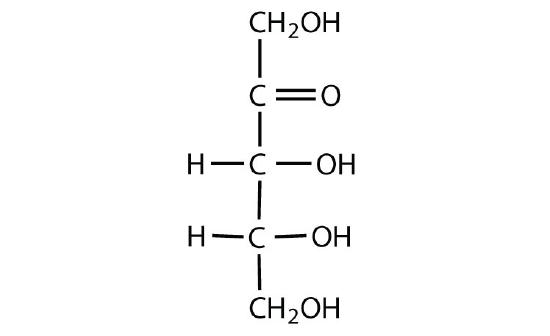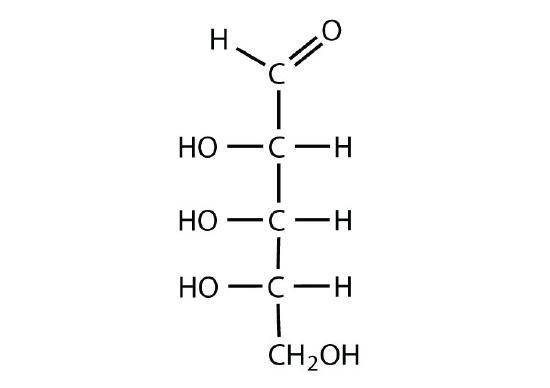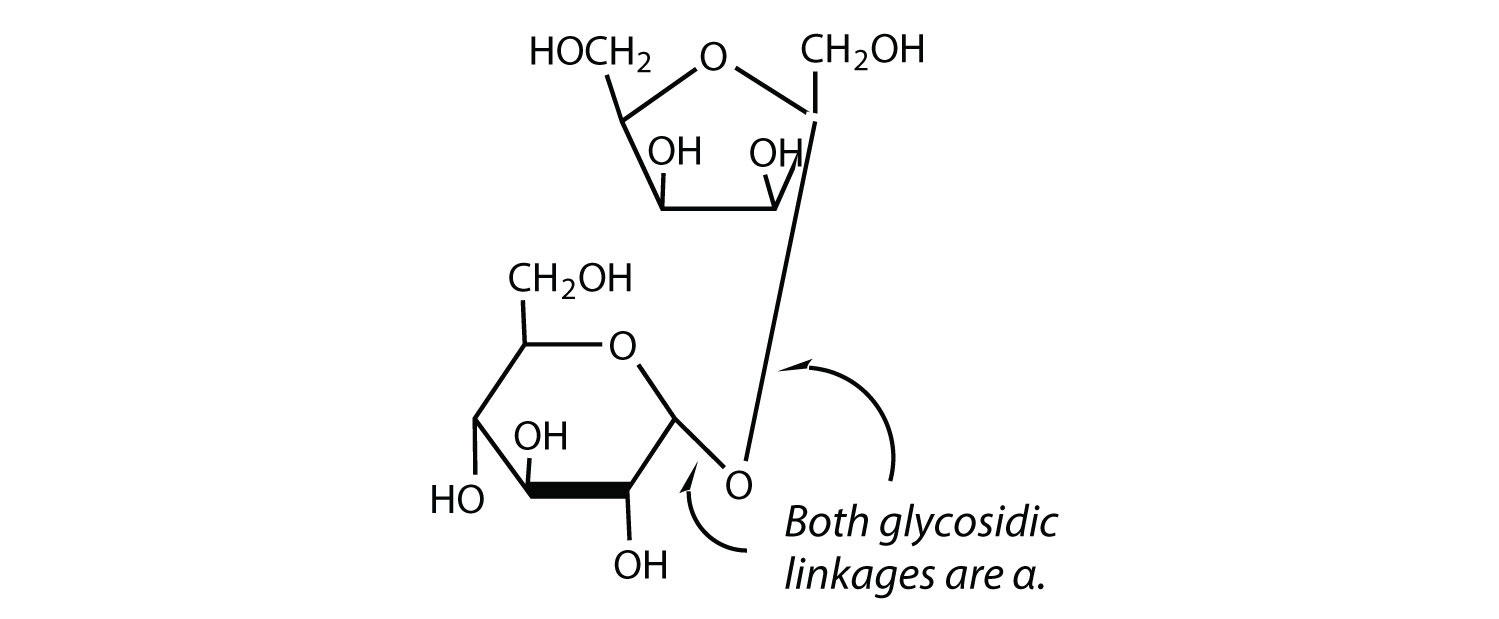16.E: Carbohydrates (Exercises)
- Page ID
- 73785
\( \newcommand{\vecs}[1]{\overset { \scriptstyle \rightharpoonup} {\mathbf{#1}} } \)
\( \newcommand{\vecd}[1]{\overset{-\!-\!\rightharpoonup}{\vphantom{a}\smash {#1}}} \)
\( \newcommand{\id}{\mathrm{id}}\) \( \newcommand{\Span}{\mathrm{span}}\)
( \newcommand{\kernel}{\mathrm{null}\,}\) \( \newcommand{\range}{\mathrm{range}\,}\)
\( \newcommand{\RealPart}{\mathrm{Re}}\) \( \newcommand{\ImaginaryPart}{\mathrm{Im}}\)
\( \newcommand{\Argument}{\mathrm{Arg}}\) \( \newcommand{\norm}[1]{\| #1 \|}\)
\( \newcommand{\inner}[2]{\langle #1, #2 \rangle}\)
\( \newcommand{\Span}{\mathrm{span}}\)
\( \newcommand{\id}{\mathrm{id}}\)
\( \newcommand{\Span}{\mathrm{span}}\)
\( \newcommand{\kernel}{\mathrm{null}\,}\)
\( \newcommand{\range}{\mathrm{range}\,}\)
\( \newcommand{\RealPart}{\mathrm{Re}}\)
\( \newcommand{\ImaginaryPart}{\mathrm{Im}}\)
\( \newcommand{\Argument}{\mathrm{Arg}}\)
\( \newcommand{\norm}[1]{\| #1 \|}\)
\( \newcommand{\inner}[2]{\langle #1, #2 \rangle}\)
\( \newcommand{\Span}{\mathrm{span}}\) \( \newcommand{\AA}{\unicode[.8,0]{x212B}}\)
\( \newcommand{\vectorA}[1]{\vec{#1}} % arrow\)
\( \newcommand{\vectorAt}[1]{\vec{\text{#1}}} % arrow\)
\( \newcommand{\vectorB}[1]{\overset { \scriptstyle \rightharpoonup} {\mathbf{#1}} } \)
\( \newcommand{\vectorC}[1]{\textbf{#1}} \)
\( \newcommand{\vectorD}[1]{\overrightarrow{#1}} \)
\( \newcommand{\vectorDt}[1]{\overrightarrow{\text{#1}}} \)
\( \newcommand{\vectE}[1]{\overset{-\!-\!\rightharpoonup}{\vphantom{a}\smash{\mathbf {#1}}}} \)
\( \newcommand{\vecs}[1]{\overset { \scriptstyle \rightharpoonup} {\mathbf{#1}} } \)
\( \newcommand{\vecd}[1]{\overset{-\!-\!\rightharpoonup}{\vphantom{a}\smash {#1}}} \)
\(\newcommand{\avec}{\mathbf a}\) \(\newcommand{\bvec}{\mathbf b}\) \(\newcommand{\cvec}{\mathbf c}\) \(\newcommand{\dvec}{\mathbf d}\) \(\newcommand{\dtil}{\widetilde{\mathbf d}}\) \(\newcommand{\evec}{\mathbf e}\) \(\newcommand{\fvec}{\mathbf f}\) \(\newcommand{\nvec}{\mathbf n}\) \(\newcommand{\pvec}{\mathbf p}\) \(\newcommand{\qvec}{\mathbf q}\) \(\newcommand{\svec}{\mathbf s}\) \(\newcommand{\tvec}{\mathbf t}\) \(\newcommand{\uvec}{\mathbf u}\) \(\newcommand{\vvec}{\mathbf v}\) \(\newcommand{\wvec}{\mathbf w}\) \(\newcommand{\xvec}{\mathbf x}\) \(\newcommand{\yvec}{\mathbf y}\) \(\newcommand{\zvec}{\mathbf z}\) \(\newcommand{\rvec}{\mathbf r}\) \(\newcommand{\mvec}{\mathbf m}\) \(\newcommand{\zerovec}{\mathbf 0}\) \(\newcommand{\onevec}{\mathbf 1}\) \(\newcommand{\real}{\mathbb R}\) \(\newcommand{\twovec}[2]{\left[\begin{array}{r}#1 \\ #2 \end{array}\right]}\) \(\newcommand{\ctwovec}[2]{\left[\begin{array}{c}#1 \\ #2 \end{array}\right]}\) \(\newcommand{\threevec}[3]{\left[\begin{array}{r}#1 \\ #2 \\ #3 \end{array}\right]}\) \(\newcommand{\cthreevec}[3]{\left[\begin{array}{c}#1 \\ #2 \\ #3 \end{array}\right]}\) \(\newcommand{\fourvec}[4]{\left[\begin{array}{r}#1 \\ #2 \\ #3 \\ #4 \end{array}\right]}\) \(\newcommand{\cfourvec}[4]{\left[\begin{array}{c}#1 \\ #2 \\ #3 \\ #4 \end{array}\right]}\) \(\newcommand{\fivevec}[5]{\left[\begin{array}{r}#1 \\ #2 \\ #3 \\ #4 \\ #5 \\ \end{array}\right]}\) \(\newcommand{\cfivevec}[5]{\left[\begin{array}{c}#1 \\ #2 \\ #3 \\ #4 \\ #5 \\ \end{array}\right]}\) \(\newcommand{\mattwo}[4]{\left[\begin{array}{rr}#1 \amp #2 \\ #3 \amp #4 \\ \end{array}\right]}\) \(\newcommand{\laspan}[1]{\text{Span}\{#1\}}\) \(\newcommand{\bcal}{\cal B}\) \(\newcommand{\ccal}{\cal C}\) \(\newcommand{\scal}{\cal S}\) \(\newcommand{\wcal}{\cal W}\) \(\newcommand{\ecal}{\cal E}\) \(\newcommand{\coords}[2]{\left\{#1\right\}_{#2}}\) \(\newcommand{\gray}[1]{\color{gray}{#1}}\) \(\newcommand{\lgray}[1]{\color{lightgray}{#1}}\) \(\newcommand{\rank}{\operatorname{rank}}\) \(\newcommand{\row}{\text{Row}}\) \(\newcommand{\col}{\text{Col}}\) \(\renewcommand{\row}{\text{Row}}\) \(\newcommand{\nul}{\text{Nul}}\) \(\newcommand{\var}{\text{Var}}\) \(\newcommand{\corr}{\text{corr}}\) \(\newcommand{\len}[1]{\left|#1\right|}\) \(\newcommand{\bbar}{\overline{\bvec}}\) \(\newcommand{\bhat}{\widehat{\bvec}}\) \(\newcommand{\bperp}{\bvec^\perp}\) \(\newcommand{\xhat}{\widehat{\xvec}}\) \(\newcommand{\vhat}{\widehat{\vvec}}\) \(\newcommand{\uhat}{\widehat{\uvec}}\) \(\newcommand{\what}{\widehat{\wvec}}\) \(\newcommand{\Sighat}{\widehat{\Sigma}}\) \(\newcommand{\lt}{<}\) \(\newcommand{\gt}{>}\) \(\newcommand{\amp}{&}\) \(\definecolor{fillinmathshade}{gray}{0.9}\)Concept Review Exercises
- Why is photosynthesis important?
- Identify the differences among monosaccharides, disaccharides, and polysaccharides.
Answers
- Photosynthesis is the process by which solar energy is used to reduce carbon dioxide to carbohydrates, which are needed for energy by plants and other living organisms that eat plants.
- A monosaccharide is the simplest carbohydrate and cannot be hydrolyzed to produce a smaller carbohydrate; a disaccharide is composed of two monosaccharide units; and a polysaccharide contains many saccharide units.
Exercises
- When an aqueous solution of trehalose is heated, two molecules of glucose are produced for each molecule of trehalose. Is trehalose a monosaccharide, a disaccharide, or a polysaccharide?
- When an aqueous solution of arabinose is heated, no other molecules are produced. Is arabinose a monosaccharide, a disaccharide, or a polysaccharide?
Answer
- Trehalose is a disaccharide because it is hydrolyzed into two molecules of glucose (a monosaccharide).
Concept Review Exercises
- What is a chiral carbon?
- Describe how enantiomers differ.
Answers
- A chiral carbon is a carbon atom with four different groups attached to it.
- Enantiomers are mirror images of each other; they differ in the arrangements of atoms around a chiral carbon.
Exercises
- Identify each sugar as an aldose or a ketose and then as a triose, tetrose, pentose, or hexose.
- D-glucose
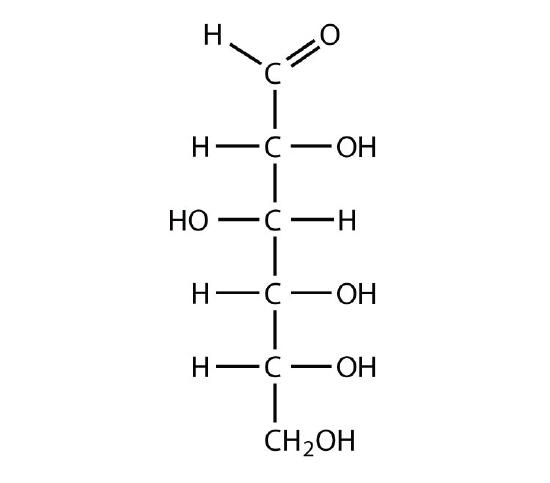
- L-ribulose
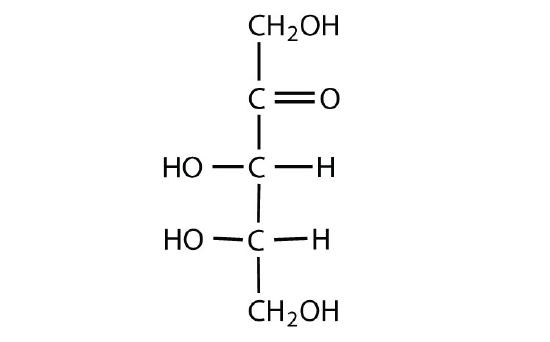
- D-glyceraldehyde

- D-glucose
- Identify each sugar as an aldose or a ketose and then as a triose, tetrose, pentose, or hexose.
- dihydroxyacetone

- D-ribose
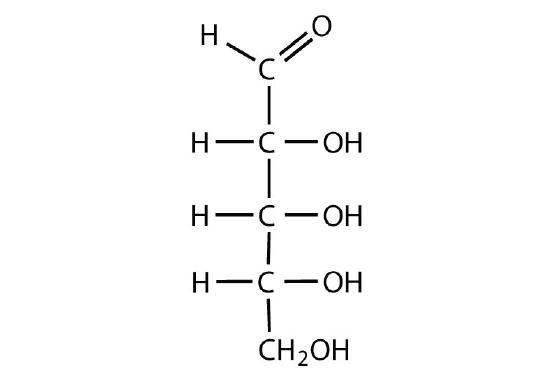
- D-galactose
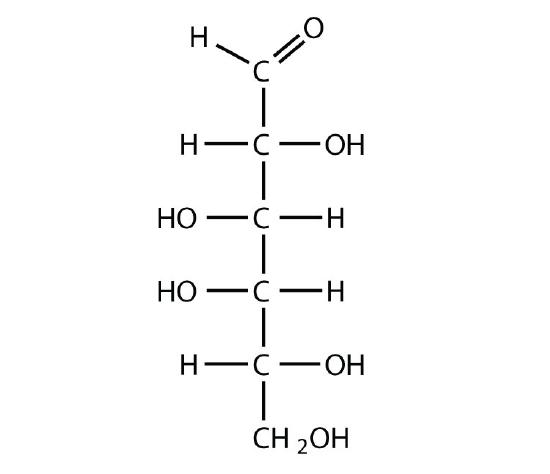
- dihydroxyacetone
- Identify each sugar as an aldose or a ketose and then as a D sugar or an L sugar.
-
- Identify each sugar as an aldose or a ketose and then as a D sugar or an L sugar.
-
Answers
-
- aldose; hexose
- ketose; pentose
- aldose; triose
-
- aldose; D sugar
- ketose; L sugar
Concept Review Exercises
- Describe the similarities and differences in the structures of D-glucose and D-galactose.
- Describe similarities and differences in the structures of D-glucose and D-fructose.
Answers
- Both monosaccharides are aldohexoses. The two monosaccharides differ in the configuration around the fourth carbon atom.
- Both monosaccharides are hexoses. D-glucose is an aldohexose, while D-fructose is a ketohexose.
Exercises
-
Identify each sugar by its common chemical name.
- blood sugar
- levulose
-
Identify each sugar by its common chemical name.
- dextrose
- brain sugar
-
Identify each sugar as an aldohexose or a ketohexose.
- glucose
- galactose
- fructose
-
What hexose would you expect to be most abundant in each food?
- honey
- milk
- cornstarch
Answers
-
- D-glucose
- D-fructose
-
- aldohexose
- aldohexose
- ketohexose
Concept Review Exercises
- Define each term.
- mutarotation
- anomer
- anomeric carbon
- How can you prove that a solution of α-D-glucose exhibits mutarotation?
Answers
-
- the ongoing interconversion between anomers of a particular carbohydrate to form an equilibrium mixture
- a stereoisomer that differs in structure around what was the carbonyl carbon atom in the straight-chain form of a monosaccharide
- the carbon atom that was the carbonyl carbon atom in the straight-chain form of a monosaccharide
- Place a sample of pure α-D-glucose in a polarimeter and measure its observed rotation. This value will change as mutarotation occurs.
Exercises
- Draw the cyclic structure for β-D-glucose. Identify the anomeric carbon.
- Draw the cyclic structure for α-D-fructose. Identify the anomeric carbon.
- Given that the aldohexose D-mannose differs from D-glucose only in the configuration at the second carbon atom, draw the cyclic structure for α-D-mannose.
- Given that the aldohexose D-allose differs from D-glucose only in the configuration at the third carbon atom, draw the cyclic structure for β-D-allose.
Answers
Concept Review Exercises
- Why are monosaccharides soluble in water?
- What is a reducing sugar?
Answers
- Monosaccharides are quite soluble in water because of the numerous OH groups that readily engage in hydrogen bonding with water.
- any carbohydrate capable of reducing a mild oxidizing agent, such as Tollens’ or Benedict’s reagents, without first undergoing hydrolysis
Exercises
- Which gives a positive Benedict’s test—L-galactose, levulose, or D-glucose?
- Which gives a positive Benedict’s test—D-glyceraldehyde, corn sugar, or L-fructose?
- D-Galactose can be oxidized at the sixth carbon atom to yield D-galacturonic acid and at both the first and sixth carbon atoms to yield D-galactaric acid. Draw the Fischer projection for each oxidation product.
- D-Glucose can be oxidized at the first carbon atom to form D-gluconic acid, at the sixth carbon atom to yield D-glucuronic acid, and at both the first and sixth carbon atoms to yield D-glucaric acid. Draw the Fischer projection for each oxidation product.
Answers
- All three will give a positive Benedict’s test because they are all monosaccharides.
Concept Review Exercise
-
What monosaccharides are obtained by the hydrolysis of each disaccharide?
- sucrose
- maltose
- lactose
Answer
-
- D-glucose and D-fructose
- two molecules of D-glucose
- D-glucose and D-galactose
Exercises
-
Identify each sugar by its common chemical name.
- milk sugar
- table sugar
-
Identify each sugar by its common chemical name.
- cane sugar
- malt sugar
-
For each disaccharide, indicate whether the glycosidic linkage is α or β.
-
-
For each disaccharide, indicate whether the glycosidic linkage is α or β.
-
-
Identify each disaccharide in Exercise 3 as a reducing or nonreducing sugar. If it is a reducing sugar, draw its structure and circle the anomeric carbon. State if the OH group at the anomeric carbon is in the α or the β position.
-
Identify each disaccharide in Exercise 4 as a reducing or nonreducing sugar. If it is a reducing sugar, draw its structure and circle the anomeric carbon. State if the OH group at the anomeric carbon is in the α or β position.
-
Melibiose is a disaccharide that occurs in some plant juices. Its structure is as follows:
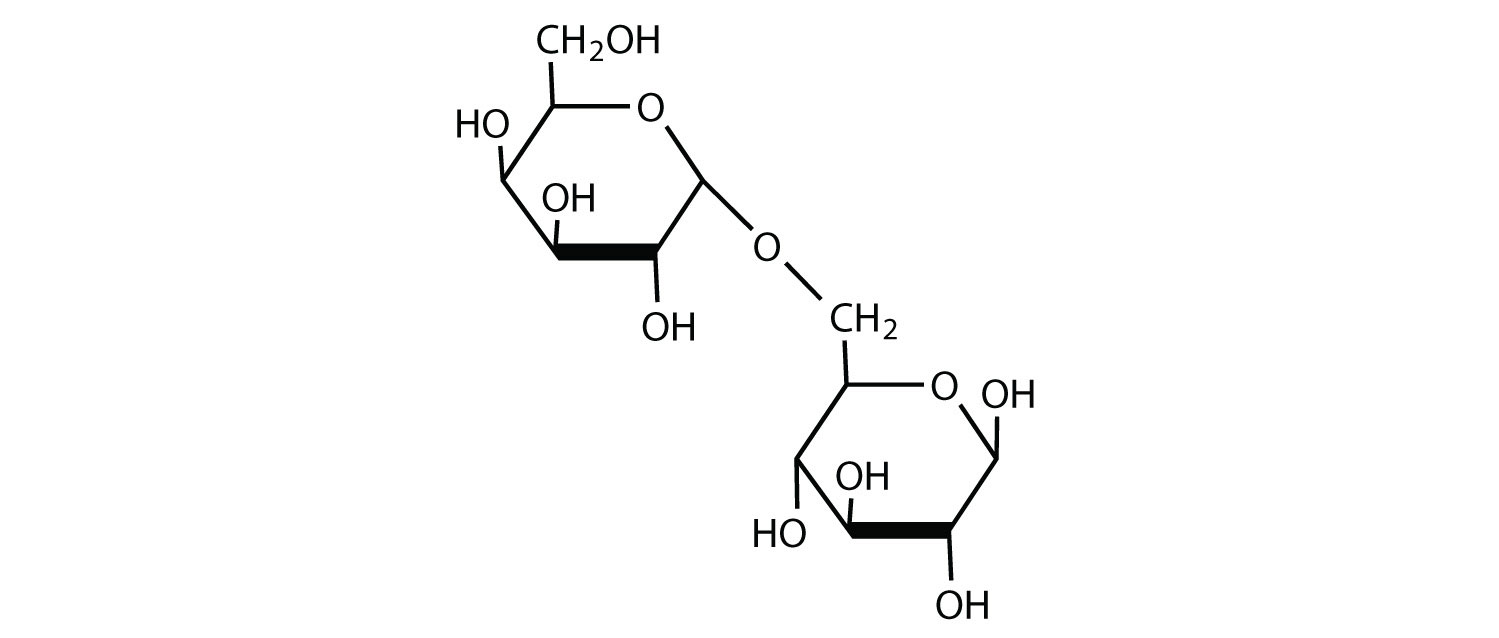
- What monosaccharide units are incorporated into melibiose?
- What type of linkage (α or β) joins the two monosaccharide units of melibiose?
- Melibiose has a free anomeric carbon and is thus a reducing sugar. Circle the anomeric carbon and indicate whether the OH group is α or β.
-
Cellobiose is a disaccharide composed of two glucose units joined by a β-1,4-glycosidic linkage.
- Draw the structure of cellobiose.
- Is cellobiose a reducing or nonreducing sugar? Justify your answer.
Answers
-
- lactose
- sucrose
-
3a: nonreducing; 3b: reducing

-
- galactose and glucose
- α-glycosidic linkage
-
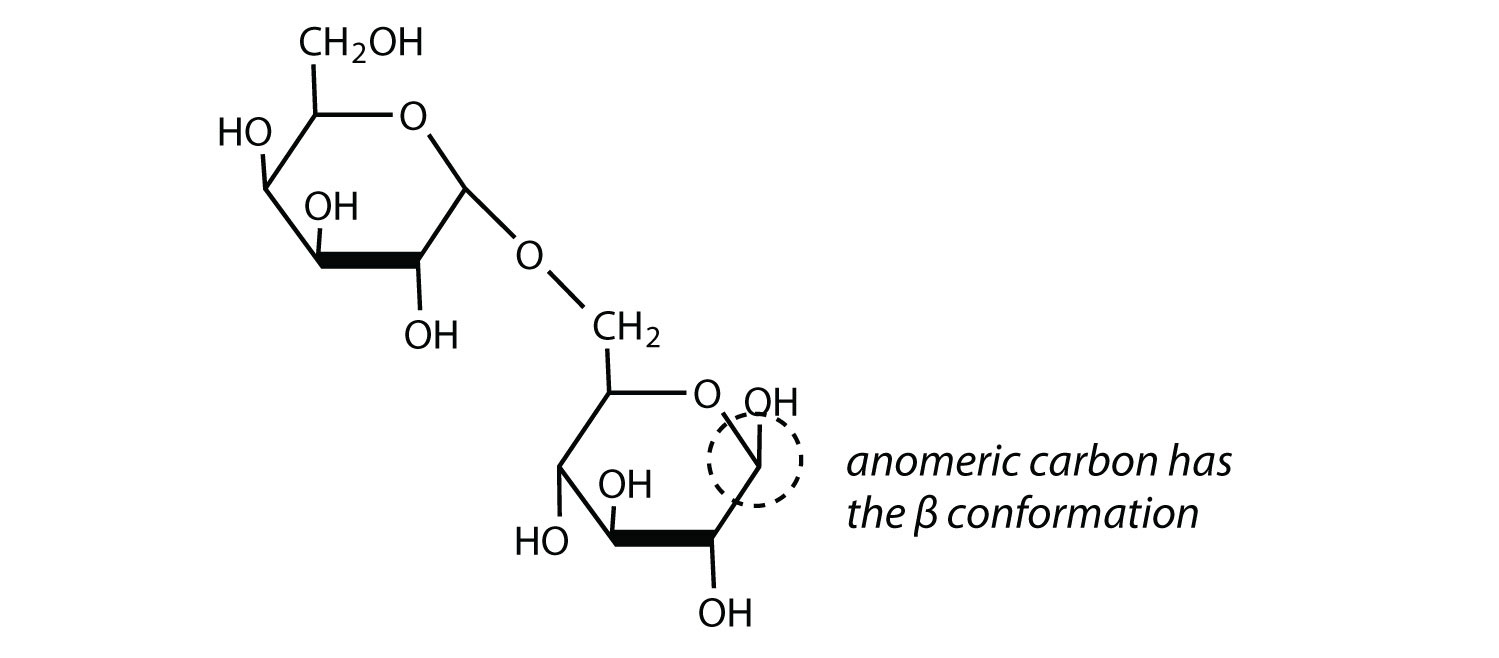
Concept Review Exercises
-
What purposes do starch and cellulose serve in plants?
-
What purpose does glycogen serve in animals?
Answers
-
Starch is the storage form of glucose (energy) in plants, while cellulose is a structural component of the plant cell wall.
-
Glycogen is the storage form of glucose (energy) in animals.
Exercises
-
What monosaccharide is obtained from the hydrolysis of each carbohydrate?
- starch
- cellulose
- glycogen
-
For each carbohydrate listed in Exercise 1, indicate whether it is found in plants or mammals.
-
Describe the similarities and differences between amylose and cellulose.
-
Describe the similarities and differences between amylopectin and glycogen.
Answers
-
- glucose
- glucose
- glucose
-
Amylose and cellulose are both linear polymers of glucose units, but the glycosidic linkages between the glucose units differ. The linkages in amylose are α-1,4-glycosidic linkages, while the linkages in cellulose they are β-1,4-glycosidic linkages.
ADDITIONAL EXERCISES
-
Draw the Fischer projections for D-glucose and D-ribose. Identify all the functional groups in each structure.
-
Draw the Fischer projections for D-galactose and D-fructose. Identify all the functional groups in each structure.
-
L-Fucose is an aldohexose that is often incorporated into oligosaccharides attached to cell membranes. It is also known as 6-deoxy-L-galactose. Draw the structure of L-fucose.
-
D-glucitol, also known as sorbitol, is added to shredded coconut to keep it soft and to pharmaceutical products to increase the absorption of nutrients. It is prepared industrially by the reduction of D-glucose. Propose a structure for D-glucitol.
-
Which would give a positive Benedict’s test—lactose, amylopectin, D-ribose, sucrose, D-glyceraldehyde, or amylose?
-
Which enzyme hydrolyzes each carbohydrate?
- maltose
- lactose
- cellulose
- sucrose
-
What structural characteristics are necessary if a disaccharide is to be a reducing sugar? Draw the structure of a hypothetical reducing disaccharide composed of two aldohexoses.
-
Raffinose, a trisaccharide found in beans and sugar beets, contains D-galactose, D-glucose, and D-fructose. The enzyme α-galactase catalyzes the hydrolysis of raffinose to galactose and sucrose. Draw the structure of raffinose. (The linkage from galactose to the glucose unit is α-1,6).
-
What reagent(s) could be used to carry out each conversion?
-
-
What reagents are necessary to carry out each conversion?
-
-
The structure of lactulose is shown here. What monosaccharide units compose this disaccharide?
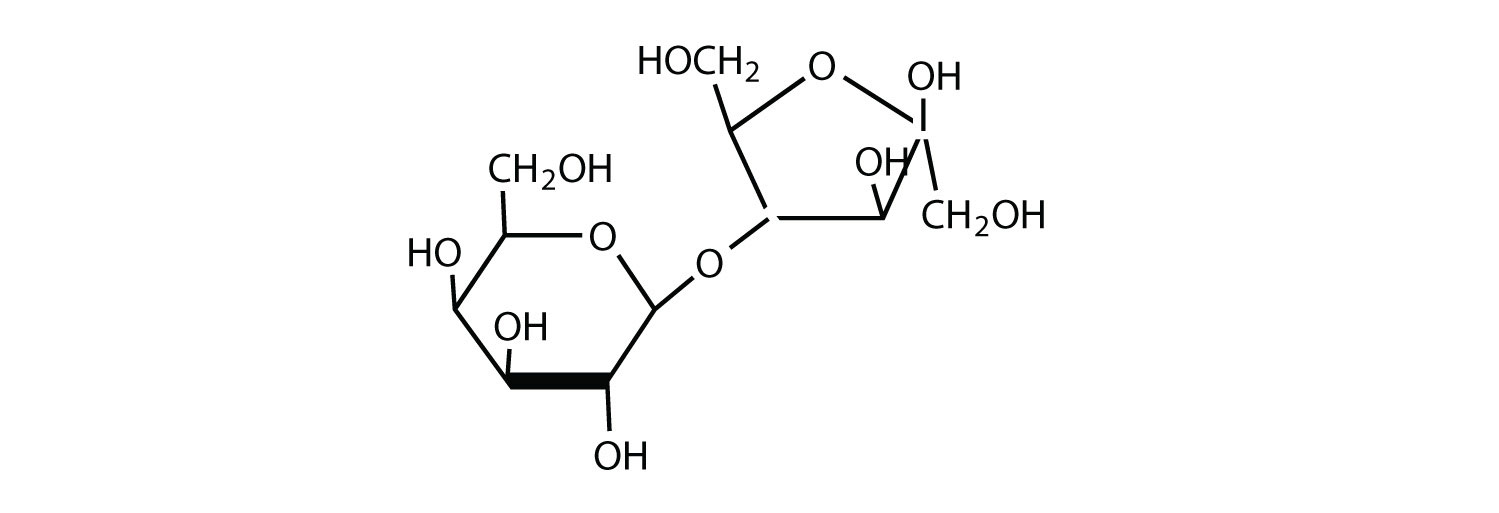
-
N-acetylglucosamine is synthesized from D-glucosamine, which in turn is obtained from D-glucose. What reagents are needed for the conversion of D-glucosamine to N-acetylglucosamine?
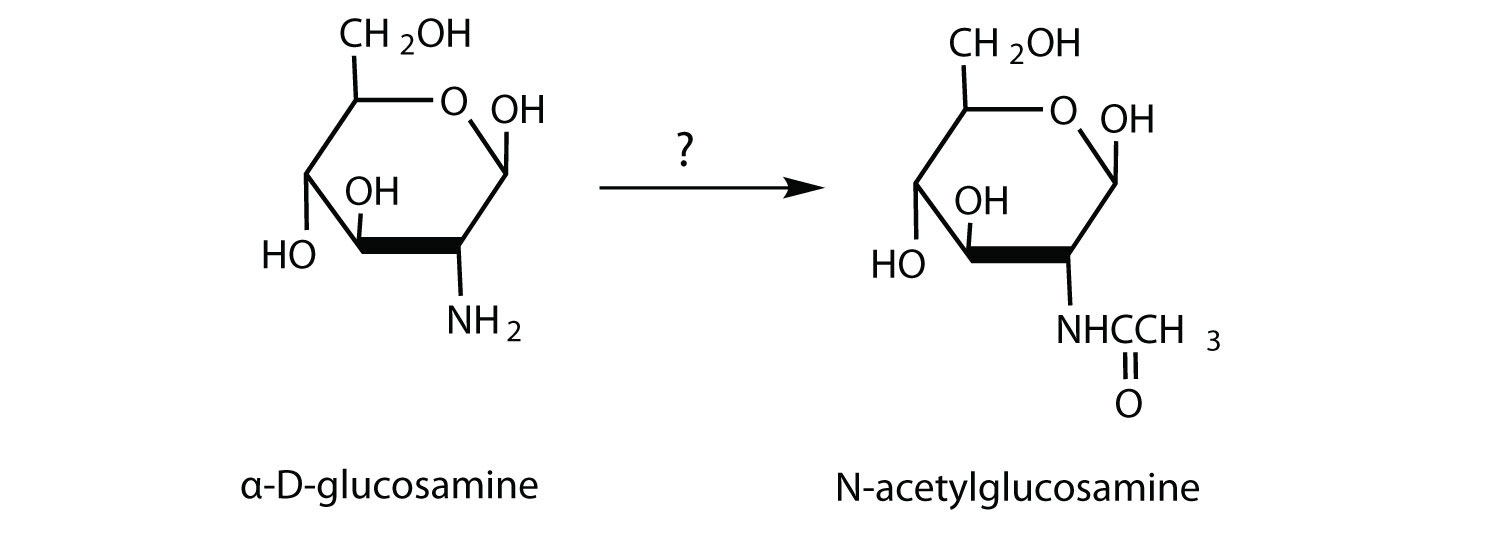
-
Hyaluronic acid is a heteropolymer that acts as a lubricating agent in the fluids of joints and the eyes. Its structure consists of repeating disaccharide units containing glucuronic acid and N-acetylglucosamine connected by a β-1,3-linkage. Draw the structure of the disaccharide unit found in hyaluronic acid.
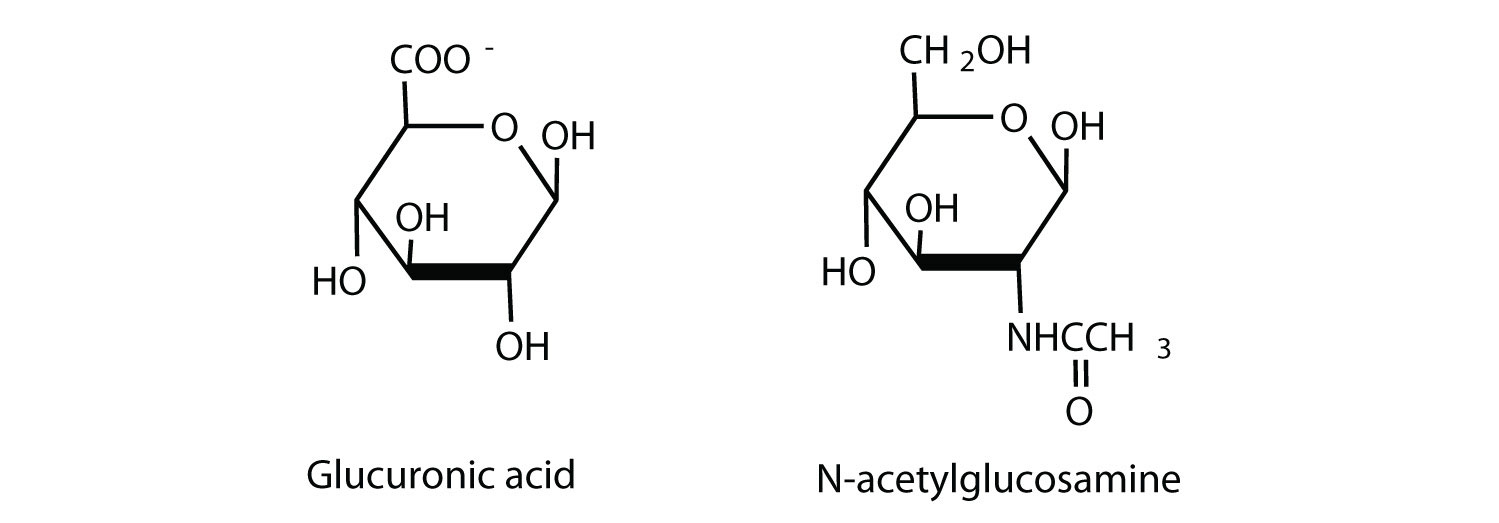
-
Several artificial sweeteners are discussed in this chapter.
- Which are currently approved for use in the United States?
- Which has (or have) a bitter, metallic aftertaste?
- Which was (or were) most recently approved for use in the United States?
- Which contain(s) potassium?
-
If 3.0 mmol (3.0 × 10−3 mol) samples of saccharin, cyclamate, aspartame, and acesulfame K were each dissolved in separate beakers containing 500 mL of pure water, which solution would have the sweetest taste? Which solution would have the least sweet taste? Justify your answers.
-
Identify two functional groups found in aspartame, acesulfame K, and sucralose.
-
Why does a deficiency of lactase lead to cramps and diarrhea?
-
How does galactosemia differ from lactose intolerance in terms of the cause of the disease and its symptoms and severity?
ANSWERS
-
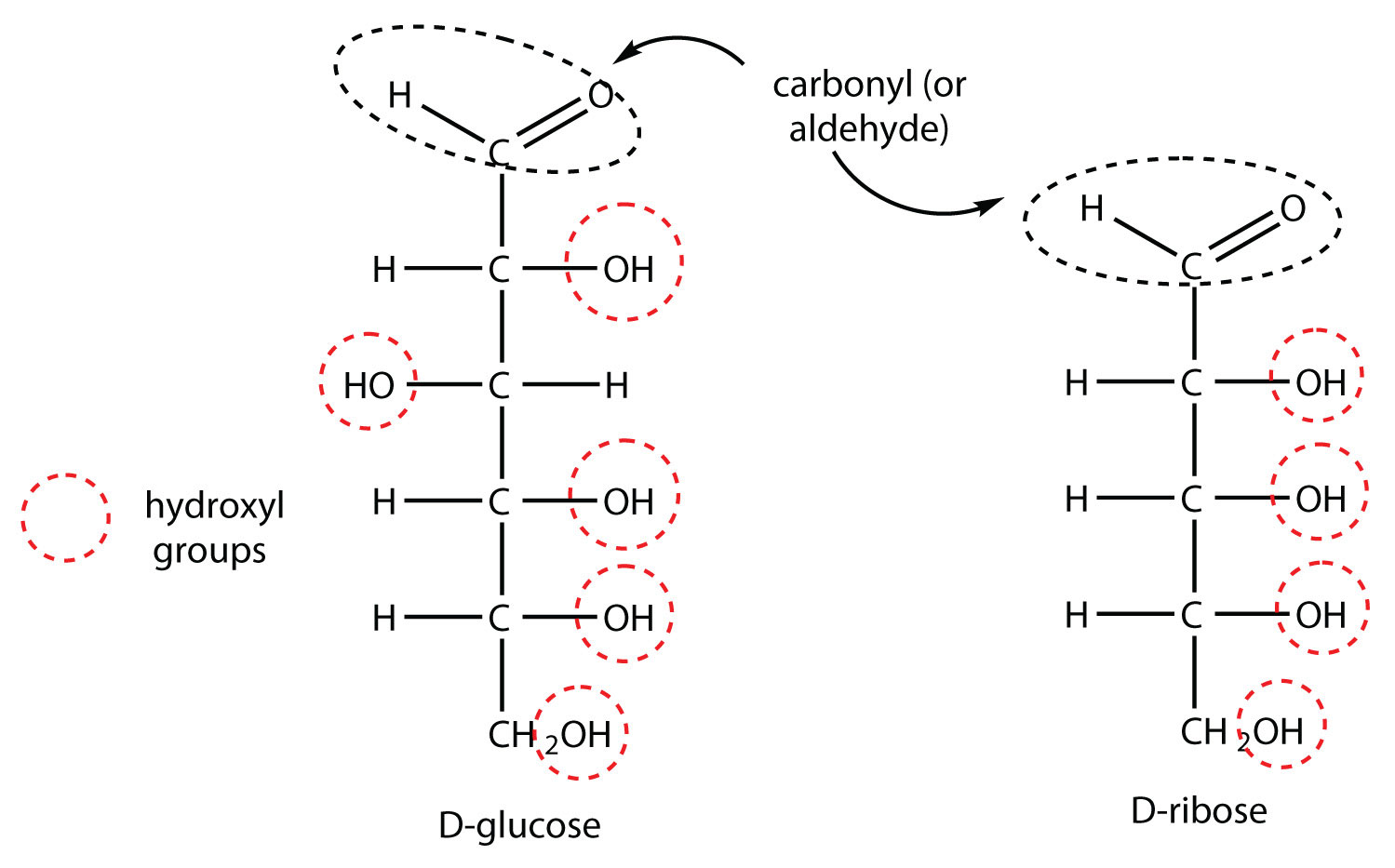
-
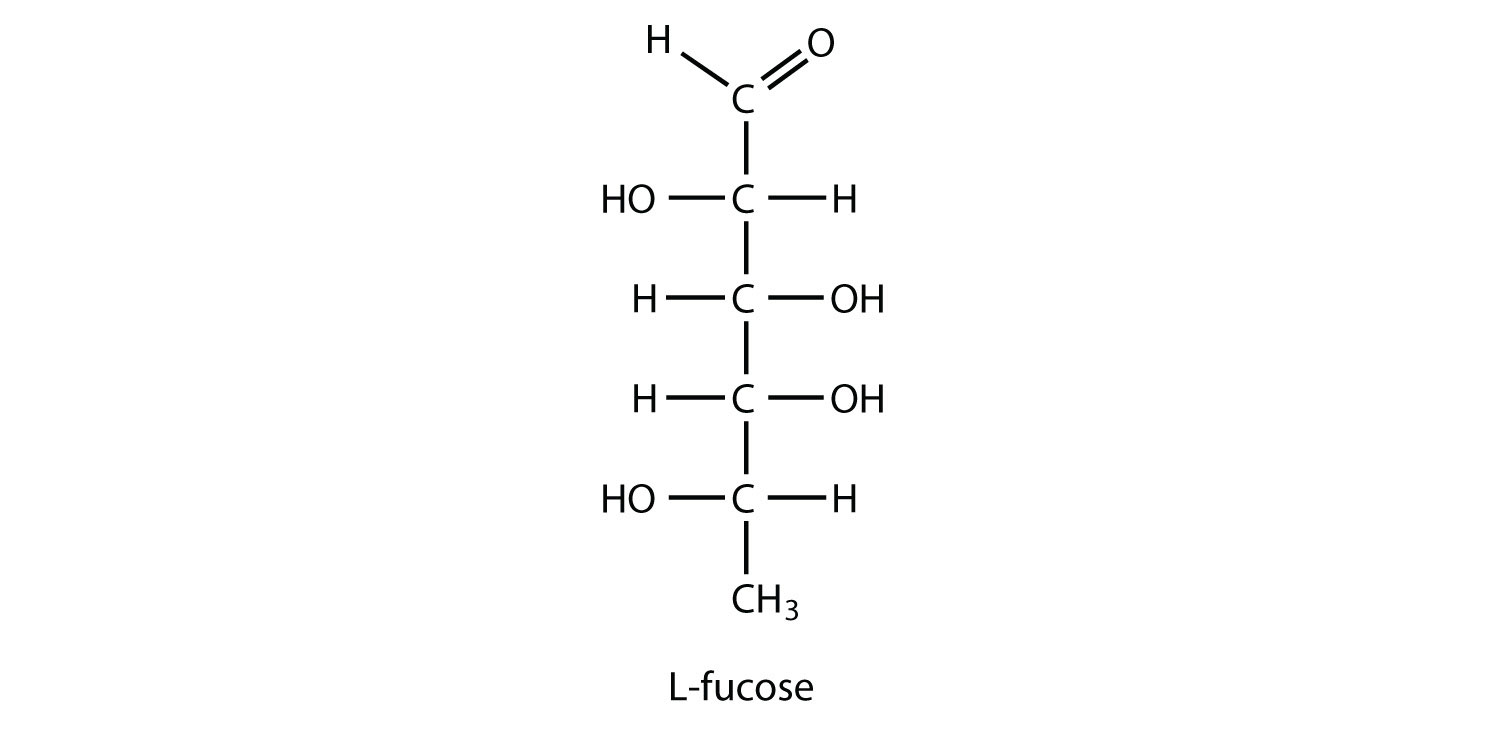
-
Lactose, D-ribose, and D-glyceraldehyde would give a positive Benedict’s test.
-
To be a reducing sugar, a disaccharide must contain an anomeric carbon atom that can open up to form an aldehyde functional group, as shown in this disaccharide (answers will vary).

-
- The carbohydrate is being oxidized; Tollens’ or Benedict’s reagent could be used.
- To form the compound shown, an aldehyde must react with methanol (CH3OH) and an acid catalyst.
-
galactose and fructose
-

-
Sucralose would be expected to have the sweetest taste because its relative sweetness is the highest. Lactose would have the least sweet taste because it has the lowest relative sweetness.
-
Intestinal bacteria can act on the lactose present in the intestine to produce organic acids and gases. The buildup of water and bacterial decay products leads to cramps and diarrhea.



